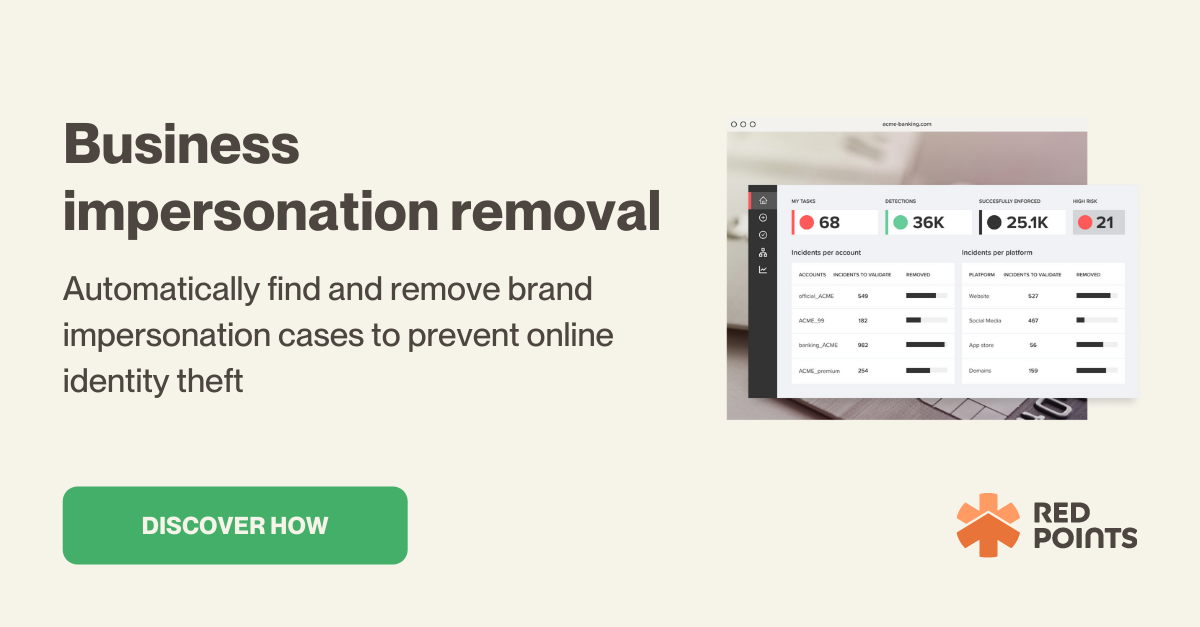
Table of Contents:
Last updated on: June 15, 2023
Creating high-quality content for your website is both hard work and time-consuming. This is why so many ruthless actors skip the work and simply copy your content and publish it as their own. Website content theft has negative consequences for ecommerce and content owners including traffic loss, lower ranking, decrease in customer loyalty, and more.
In this article, we will clarify what website content theft is and what you can do to protect your website content from being copied. You will learn which elements of your website you can protect and how to do it.
Content theft is the unauthorized use of website content by a third party for their own benefit. Competitors copy a variety of digital content from websites including blog posts, images, audiovisual elements, and more. Content theft is often done at scale, using automated software that scans websites and copies content.
Content thieves copy media content to generate traffic and ad revenue on their own sites by profiting from the work others did. Competitors also copy product descriptions, prices, and customer reviews on ecommerce sites.

Domain names
Although not protected by copyright law, a domain name becomes an exclusive web address through the registration process and therefore can’t be copied. However, domain owners should take additional steps to protect domain names as website impersonators execute sophisticated attacks that threaten your brand or digital content.
These impersonation attacks include domain spoofing, cybersquatting, and typosquatting. Thereby, impersonators create fake websites or register different extensions of the same domain name in order to sell it back to the original brand to make a profit. Other reasons for these impersonation attacks are stealing sensitive information or selling counterfeits.
Copyrighted digital content
Copyrights protect website content and the original works of a creator such as written texts, music, images, videos, software codes, and others. Creators are granted automatic protection by copyright law when they publish on their website or any other tangible medium. This content theft protection includes the exclusive rights to publish, sell, modify and reproduce the original works.
When content thieves copy images, text-based content like blog posts, or audiovisual elements from your website for their own profit, they perpetrate a copyright infringement that can be prosecuted. Copyrights do not need to be registered to be effective as they come automatically with the creation of an original work. However, formal registration is helpful when it comes to a lawsuit as it gives you proof of ownership.
Registered trademarks
Trademarks are symbols, words, phrases, color schemes, or other identifying elements of a brand that allow consumers to distinguish the source of goods and services. As such, you can trademark your brand logo and slogans on your website and even your domain name. The key element for obtaining a trademark for your domain name is that it is distinctive and offers services to the public including ecommerce sites.
An example of a trademarked domain name is “Yahoo.com”, whereas sites that use descriptive or generic names like “books” for a bookshop are less likely granted a mark.
The structure of an article
While originally created blog posts can be protected by copyright, content thieves may circumvent infringements by making little changes before publishing them on their own websites. This includes stuffing the text with a similar keyword or making only slight changes in the sentences while copying the structure and wording of the whole article.
Website layout and appearance
We know by now that you can trademark words, phrases, or symbols on your website that define your business. The same goes for copyrighting the content on your website to protect it from people who want to copy and reuse it without asking for permission. However, you can’t trademark an entire website.
The first reason why you can’t protect the appearance of a website is that many websites use similar templates that lead to similar-looking websites. Additionally, as the content on a website changes a lot, it is not possible to trademark an entire website.
Other elements that can’t be protected from content theft include links to another website, prices in online shops and customer reviews.
Find out if your content got stolen
There are a few tools that help you find out if your content got copied:
Update your terms and conditions and add a copyright notice
You can state in the terms and conditions on your website that any stealing and scraping of your content is prohibited. This can even include elements that are not protectable from content theft as intellectual property like prices or customer reviews.
Adding a copyright notice on your website will prevent any confusion about whether your content is free to use. You can include the copyright notice by adding text to your footer. This can look like this:
Copyright © 2022 SiteName.
The exact phrasing of the notice is not fixed. Important is that you mention “Copyright” or the “©“ symbol, the year and the name of the website. You can then update the notice every year as it is an effective way of website content theft protection.
Watermark your images
Images are one of the most copied elements from websites. Using watermarks allows you to tag your images with proof of ownership. Watermarks come in different shapes from hardly visible marks to visible logos.
Just as adding a copyright notice on your website will not fully prevent content theft, watermarks give no full protection from thieves who copy your images. However, it will make the theft more obvious and requests additional work for thieves, as they need to remove the watermark which will make the content theft less likely.
Use robot.txt files to block scraper bots
You can use robot.txt files to block the IP addresses of scraper bots that are stealing your content. In theory, a bot should recognize the notice before scraping your content. However, disrespectful bots might just ignore this and will copy your work anyway.
A DMCA notice allows you to formally report an infringement online. Takedown requests can be made for individual infringements when taking down an entire website is not possible. Marketplaces and social media platforms like Facebook, Amazon, YouTube or Instagram have their own online forms for reporting an infringement that is easily accessible.
When requesting a takedown of an independent website that is using your content you can first immediately contact the person or site and claim to take it down. If your request is being ignored, you can send a cease and desist letter, which functions as an official DMCA notice, to the domain registrant of the infringing site. The notice should include information on the content that has been infringed.
If this is also ignored, you can send the C&D letter to the web host where the site is registered. If you don’t know the web host or have difficulties finding it, the registration data lookup tool ICANN will help you identify it.
Searching the web for possible content theft and taking it down is a task, not every ecommerce and content owner can shoulder as it is time-consuming and daunting. Website content theft protection services like Red Points search the web with technology-based solutions and request takedowns of infringing sites as soon as they are detected. Working with experts in this field gives you the freedom to focus on your business while knowing that your intellectual property is enforced.
Protecting your website content from being copied allows you to lower the risk that someone else is benefiting from your work while simultaneously harming your business. Content theft can ultimately lead to revenue losses due to a decrease in search rankings and decreased customer loyalty.
The best way to handle this issue is by identifying and taking down websites that are infringing on your intellectual property. Red Points can help you scan the web for infringements and enforce your IP.
Reach out to us today and learn more about how we can protect your digital content.
